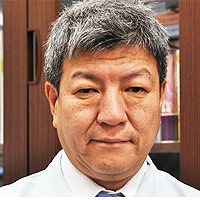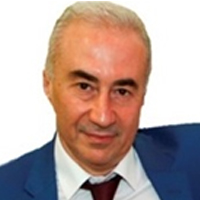Abstract
Review Article
Treatment Options for Congenital Dyserythropoietic Anemias (CDAs): Advances in Bone Marrow Transplantation, Gene Therapy, and Targeted Therapies
Sophia Delicou*, Maria Moraki, Elena Papatheodorou and Aikaterini Xydaki
Published: 30 November, 2024 | Volume 8 - Issue 1 | Pages: 027-033
Congenital Dyserythropoietic Anaemia (CDA) is a rare genetic disorder that affects the maturation of red blood cells. The disorder is classified into different types, with a prevalence ranging from 1 in 100,000 to 1 in 1,000,000 individuals. Treatment strategies are designed with the primary focus on symptom management, the prevention and treatment of complications, and the underlying disease pathophysiology. The advent of bone marrow transplantation, gene therapy, and targeted therapies has considerably expanded the scope for therapeutic intervention in CDAs. Supportive care, including blood transfusions and iron chelation therapy, has demonstrated efficacy in managing iron overload and improving overall survival rates. The potential of gene therapy, targeted therapies, and hematopoietic growth factors in the treatment of CDA is currently being investigated. Further research and clinical trials are required to develop more effective and personalized therapeutic interventions.
Read Full Article HTML DOI: 10.29328/journal.jhcr.1001031 Cite this Article Read Full Article PDF
Keywords:
Personalized interventions, Congenital Dyserythropoietic Anaemia (CDA), Red blood cell maturation, Targeted therapies
References
- Gambale A, Iolascon A, Andolfo I, Russo R. Diagnosis and management of congenital dyserythropoietic anemias. Expert review of hematology. 2016;9(3):283-296. Available from: https://doi.org/10.1586/17474086.2016.1131608
- Russo R, Iolascon A, Andolfo I, Marra R, Rosato BE. Updates on clinical and laboratory aspects of hereditary dyserythropoietic anemias. International Journal of Laboratory Hematology. 2024. Available from: https://doi.org/10.1111/ijlh.14307
- Iolascon A, Esposito MR, Russo R. Clinical aspects and pathogenesis of congenital dyserythropoietic anemias: from morphology to molecular approach. haematologica. 2012;97(12):1786. Available from: https://doi.org/10.3324/haematol.2012.072207
- Renella R, Wood WG. The congenital dyserythropoietic anemias. Hematology/Oncology Clinics. 2009;23(2):283-306. Available from: https://doi.org/10.1016/j.hoc.2009.01.010
- Cazzola M. Ineffective erythropoiesis and its treatment. Blood, The Journal of the American Society of Hematology. 2022;139(16):2460-2470. Available from:https://doi.org/10.1182/blood.2021011045
- Cappellini MD. Exjade®(deferasirox, ICL670) in the treatment of chronic iron overload associated with blood transfusion. Therapeutics and clinical risk management. 2007;3(2):291-299. Available from: https://doi.org/10.2147/tcrm.2007.3.2.291
- Coates TD. Iron overload in transfusion-dependent patients. Hematology 2014, the American Society of Hematology Education Program Book. 2019;2019(1):337-344. Available from: https://doi.org/10.1182/hematology.2019000036
- Wanless IR, Sweeney G, Dhillon AP, Guido M, Piga A, Galanello R, et al. Lack of progressive hepatic fibrosis during long-term therapy with deferiprone in subjects with transfusion-dependent beta-thalassemia. Blood, the Journal of the American Society of Hematology. 2002;100(5):1566-1569. Available from: https://doi.org/10.1182/blood-2002-01-0306
- Maggio A. Light and shadows in the iron chelation treatment of haematological diseases. British journal of haematology. 2007;138(4):407-421. Available from: https://doi.org/10.1111/j.1365-2141.2007.06666.x
- Uygun V, Russo R, Karasu G, Daloğlu H, Iolascon A, Yeşilipek A. Hematopoietic stem cell transplantation in congenital dyserythropetic anemia type II: a case report and review of the literature. Journal of Pediatric Hematology/Oncology. 2020;42(6):e507-510. Available from: https://doi.org/10.1097/mph.0000000000001612
- Braun M, Wölfl M, Wiegering V, Winkler B, Ertan K, Bald R, et al. Successful treatment of an infant with CDA type II by intrauterine transfusions and postnatal stem cell transplantation. Pediatric Blood & Cancer. 2014;61(4):743-745. Available from: https://doi.org/10.1002/pbc.24786
- Gupta V, Braun TM, Chowdhury M, Tewari M, Choi SW. A systematic review of machine learning techniques in hematopoietic stem cell transplantation (HSCT). Sensors. 2020;20(21):6100. Available from: https://doi.org/10.3390/s20216100
- Rangarajan HG, Stanek JR, Abdel-Azim H, Modi A, Haight A, McKinney CM, et al. Hematopoietic cell transplantation for congenital dyserythropoietic anemia: a report from the pediatric transplant and cellular therapy Consortium. Transplantation and Cellular Therapy. 2022;28(6):329-e1. Available from: https://doi.org/10.1016/j.jtct.2022.03.007
- Miano M, Eikema DJ, Aljurf M, van’t Veer PJ, Öztürk G, Wölfl M, et al. Stem cell transplantation for congenital dyserythropoietic anemia: an analysis from the European Society for Blood and Marrow Transplantation. haematologica. 2019;104(8):e335. Available from: https://doi.org/10.3324/haematol.2018.206623
- Sayed N, Allawadhi P, Khurana A, Singh V, Navik U, Pasumarthi SK, et al. Gene therapy: Comprehensive overview and therapeutic applications. Life sciences. 2022;294:120375. Available from: https://doi.org/10.1016/j.lfs.2022.120375
- Dessy-Rodriguez M, Fañanas-Baquero S, Venturi V, Payán-Pernía S, Tornador C, Hernandez G, et al. Modelling Congenital Dyserythropoietic Anemia Type II through Gene Editing in Hematopoietic Stem and Progenitor Cells. Blood. 2020;136:27. Available from: https://doi.org/10.1182/blood-2020-139207
- Kumari R, Kaźmierczak P. Modeling congenital dyserythropoietic anemia in genetically modified mice. Acta Haematologica Polonica. 2022;53(1):26-38. Available from: https://doi.org/10.5603/AHP.a2022.0003
- Khoriaty R, Weyand A, Hesketh G, Bernard A, Everett L, Zhu G, et al. Overlap of SEC23A and SEC23B function suggests a novel therapeutic approach for congenital dyserythropoietic anemia type II. Blood. 2017;130:80. Available from: http://dx.doi.org/10.1182/blood.V130.Suppl_1.80.80
- Chen Y, Wen R, Yang Z, Chen Z. Genome editing using CRISPR/Cas9 to treat hereditary hematological disorders. Gene Therapy. 2022;29(5):207-216. Available from: https://doi.org/10.1038/s41434-021-00247-9
- Dessy-Rodriguez M, Fañanas-Baquero S, Venturi V, Payan S, Tornador C, Hernández G, et al. Lentiviral Gene Therapy for the Correction of Congenital Dyserythropoietic Anemia Type II. Blood. 2021;138:1994. Available from: http://dx.doi.org/10.1182/blood-2021-152332
- Rahimmanesh I, Boshtam M, Kouhpayeh S, Khanahmad H, Dabiri A, Ahangarzadeh S, et al. Gene editing-based technologies for beta-hemoglobinopathies treatment. Biology. 2022;11(6):862. Available from: https://doi.org/10.3390/biology11060862
- Srole DN, Ganz T. Erythroferrone structure, function, and physiology: Iron homeostasis and beyond. Journal of cellular physiology. 2021;236(7):4888-4901. Available from: https://doi.org/10.1002/jcp.30247
- Babitt JL. Erythroferrone in iron regulation and beyond. Blood, The Journal of the American Society of Hematology. 2022;139(3):319-321. Available from: https://doi.org/10.1182/blood.2021014326
- Koury MJ. Erythroferrone: a missing link in iron regulation. The Hematologist. 2015;12(1).
- Babar S, Saboor M. Erythroferrone in focus: emerging perspectives in iron metabolism and hematopathologies. Blood Science. 2024;6(4):e00198. Available from: https://doi.org/10.1097/bs9.0000000000000198
- van Vuren AJ, Eisenga MF, van Straaten S, Glenthøj A, Gaillard CA, Bakker SJ, et al. Interplay of erythropoietin, fibroblast growth factor 23, and erythroferrone in patients with hereditary hemolytic anemia. Blood advances. 2020;4(8):1678-1682. Available from: https://doi.org/10.1182/bloodadvances.2020001595
- De Rosa G, Andolfo I, Marra R, Manna F, Rosato BE, Iolascon A, et al. RAP-011 rescues the disease phenotype in a cellular model of congenital dyserythropoietic anemia type II by inhibiting the SMAD2-3 pathway. International journal of molecular sciences. 2020;21(15):5577. Available from: https://doi.org/10.3390/ijms21155577
- Lan Z, Lv Z, Zuo W, Xiao Y. From bench to bedside: The promise of sotatercept in hematologic disorders. Biomedicine & Pharmacotherapy. 2023;165:115239. Available from: https://doi.org/10.1016/j.biopha.2023.115239
- Davies AT, Devlin PM, Dugan C, Richards T, Miles LF. Non‐erythropoiesis stimulating agent, non‐iron therapies for the management of anemia: A scoping review. Transfusion. 2023;63(4):849-860. Available from: https://doi.org/10.1111/trf.17274
- Iolascon A, Rivella S, Anagnou NP, Camaschella C, Swinkels D, Muckenthaler MU, Porto G, Barcellini W, Andolfo I, Risitano AM, Kattamis A. The EHA research roadmap: anemias. Hemasphere. 2021;5(7):e607. Available from: https://doi.org/10.1097/hs9.0000000000000607
- Kubasch AS, Fenaux P, Platzbecker U. Development of luspatercept to treat ineffective erythropoiesis. Blood advances. 2021;5(5):1565-1575. Available from: https://doi.org/10.1182/bloodadvances.2020002177
- Lee D, Kim DW, Cho JY. Role of growth factors in hematopoietic stem cell niche. Cell biology and toxicology. 2020;36(2):131-144. Available from: https://doi.org/10.1007/s10565-019-09510-7
- Mann Z, Sengar M, Verma YK, Rajalingam R, Raghav PK. Hematopoietic stem cell factors: their functional role in self-renewal and clinical aspects. Frontiers in Cell and Developmental Biology. 2022;10:664261. Available from: https://doi.org/10.3389/fcell.2022.664261
- Cappellini MD, Marcon A, Fattizzo B, Motta I. Innovative treatments for rare anemias. HemaSphere. 2021 Jun 1;5(6):e576. Available from: https://doi.org/10.1097/hs9.0000000000000576
- Suragani RN, Cadena SM, Cawley SM, Sako D, Mitchell D, Li R, et al. Transforming growth factor-β superfamily ligand trap ACE-536 corrects anemia by promoting late-stage erythropoiesis. Nat Med. 2014;20(4):408-414. Available from: https://doi.org/10.1038/nm.3512
- Carrancio S, Markovics J, Wong P, Leisten J, Castiglioni P, Groza MC, et al. An activin receptor IIA ligand trap promotes erythropoiesis resulting in a rapid induction of red blood cells and haemoglobin. Br J Haematol. 2014;165(6):870-882. Available from: https://doi.org/10.1111/bjh.12838
Figures:

Figure 1
Similar Articles
Recently Viewed
-
From the Single Bacterial Cell to the Microbial Community: A Round Trip to better understand the Secrets of Complex Microbiological EcosystemsErasmo Neviani*. From the Single Bacterial Cell to the Microbial Community: A Round Trip to better understand the Secrets of Complex Microbiological Ecosystems. Int J Clin Microbiol Biochem Technol. 2024: doi: 10.29328/journal.ijcmbt.1001029; 7: 006-008
-
Systemic Lupus Erythematosus and Depression OverviewAhmed Shaaban*,Nourelhouda Said,Hoda Afifi. Systemic Lupus Erythematosus and Depression Overview. Insights Depress Anxiety. 2024: doi: 10.29328/journal.ida.1001039; 8: 001-004
-
Validation of Prognostic Scores for Attempted Vaginal Delivery in Scar UterusMouiman Soukaina*,Mourran Oumaima,Etber Amina,Zeraidi Najia,Slaoui Aziz,Baydada Aziz. Validation of Prognostic Scores for Attempted Vaginal Delivery in Scar Uterus. Clin J Obstet Gynecol. 2025: doi: 10.29328/journal.cjog.1001185; 8: 023-029
-
Septic Shock on Bartholinitis: Case Report and Modern Surgical ApproachesOumaima Fakir*,Hanaa Lazhar,Aziz Slaoui,Amina Lakhdar,Aziz Baydada. Septic Shock on Bartholinitis: Case Report and Modern Surgical Approaches. Clin J Obstet Gynecol. 2025: doi: 10.29328/journal.cjog.1001183; 8: 015-018
-
Obesity and Sex as Determinants of Atherogenic Risk Associated with High-Density (HDL) and Low-Density Lipoprotein (LDL) Subfractions in Adolescents: A Population-based Study Based on Health Survey of Sao PauloMarlene N Aldin, Regina M Fisberg, Marcelo M Rogero, Flavia M Sarti, Nágila RT Damasceno*. Obesity and Sex as Determinants of Atherogenic Risk Associated with High-Density (HDL) and Low-Density Lipoprotein (LDL) Subfractions in Adolescents: A Population-based Study Based on Health Survey of Sao Paulo. J Adv Pediatr Child Health. 2024: doi: 10.29328/journal.japch.1001068; 7: 052-061
Most Viewed
-
Evaluation of Biostimulants Based on Recovered Protein Hydrolysates from Animal By-products as Plant Growth EnhancersH Pérez-Aguilar*, M Lacruz-Asaro, F Arán-Ais. Evaluation of Biostimulants Based on Recovered Protein Hydrolysates from Animal By-products as Plant Growth Enhancers. J Plant Sci Phytopathol. 2023 doi: 10.29328/journal.jpsp.1001104; 7: 042-047
-
Sinonasal Myxoma Extending into the Orbit in a 4-Year Old: A Case PresentationJulian A Purrinos*, Ramzi Younis. Sinonasal Myxoma Extending into the Orbit in a 4-Year Old: A Case Presentation. Arch Case Rep. 2024 doi: 10.29328/journal.acr.1001099; 8: 075-077
-
Feasibility study of magnetic sensing for detecting single-neuron action potentialsDenis Tonini,Kai Wu,Renata Saha,Jian-Ping Wang*. Feasibility study of magnetic sensing for detecting single-neuron action potentials. Ann Biomed Sci Eng. 2022 doi: 10.29328/journal.abse.1001018; 6: 019-029
-
Pediatric Dysgerminoma: Unveiling a Rare Ovarian TumorFaten Limaiem*, Khalil Saffar, Ahmed Halouani. Pediatric Dysgerminoma: Unveiling a Rare Ovarian Tumor. Arch Case Rep. 2024 doi: 10.29328/journal.acr.1001087; 8: 010-013
-
Physical activity can change the physiological and psychological circumstances during COVID-19 pandemic: A narrative reviewKhashayar Maroufi*. Physical activity can change the physiological and psychological circumstances during COVID-19 pandemic: A narrative review. J Sports Med Ther. 2021 doi: 10.29328/journal.jsmt.1001051; 6: 001-007

HSPI: We're glad you're here. Please click "create a new Query" if you are a new visitor to our website and need further information from us.
If you are already a member of our network and need to keep track of any developments regarding a question you have already submitted, click "take me to my Query."
















































































































































